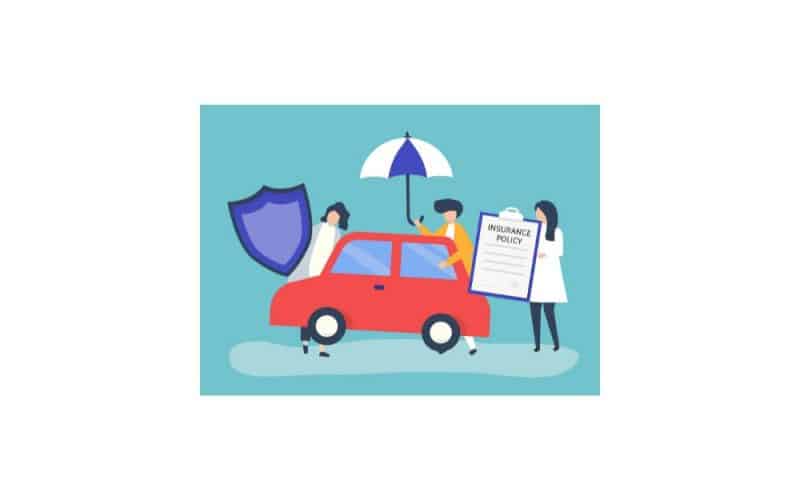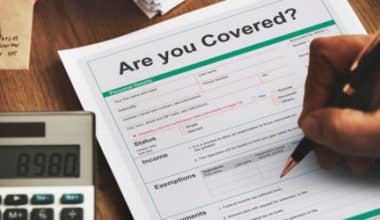Oklahoma car insurance laws require drivers to maintain a valid insurance policy that includes bodily injury liability and property damage liability. Failure to do so may result in penalties and fees.
When shopping for Oklahoma auto insurance, it’s helpful for car owners to understand what’s required to drive legally and why purchasing additional coverage may be beneficial. In addition to mandatory insurance, here are a few other laws to be aware of:
- Drivers are required to carry proof of insurance in their vehicles at all times.
- Oklahoma participates in an online insurance verification process. If you are stopped by law enforcement, the officer must verify insurance coverage through this.
- If you are caught driving without insurance, you are subject to fines and penalties.
Auto Insurance in Oklahoma
Drivers in the state of Oklahoma are required to maintain minimum auto insurance coverage for their vehicles. Hence you want to make sure your auto policy meets or exceeds the required minimum for coverage in Oklahoma.
Oklahoma law requires you to have liability car insurance. This coverage protects others if you cause bodily harm or property damage to them. It’s important to know this coverage doesn’t cover you, your car, or your personal belongings.
Drivers must have a car insurance policy with the minimum coverage of:
- Bodily Injury Liability: $25,000 per person and $50,000 per accident
- Property Damage Liability: $25,000 per accident
You may see this written as 25/50/25.
Remember, this is only the minimum Liability Coverage required by law. You may want to think about increasing your limits for more financial protection. You should also consider other types of coverage that can give you even more protection.
Best car insurance companies in Oklahoma
Geico
Geico’s average full-coverage premium in Oklahoma is nearly 50% below the state average, making it one of the cheapest companies available. On top of this already low average premium, Geico also has an extensive list of potential discounts that might help further lower your rate.
Although military members and government employees could earn the company’s Eagle discount, the company doesn’t have eligibility restrictions like military-focused USAA. Civilians might qualify for other savings opportunities, too, like defensive driving or affiliation (which offers savings if you are part of certain organizations) discounts or Drive Easy, Geico’s telematics program.
State Farm
State Farm may be known for its expansive network of neighborhood agencies, but it also scored highly in the service category in the J.D. Power 2023 U.S. Insurance Digital Experience Study. This score indicates that State Farm policyholders are typically happy with the company’s online policy portal and mobile app (which is also highly rated on the App Store and Google Play).
Unlike some companies’ mobile tools, State Farm’s app allows you to make policy changes as well as make payments and track claims. It also has a tendency to offer lower-than-average rates for those with a single at-fault accident or speeding ticket on their records.
Customers who value strong customer service — through a mobile app or local agents — may choose State Farm as their carrier of choice.
Progressive
Although Progressive’s average rate in Oklahoma is only slightly below the state average, getting a quote from the company may be worth it for drivers looking for a streamlined car insurance shopping experience. Not only will Progressive’s Name Your Price tool curate a coverage package based on your desired budget, but the company will also present you rates from its competitors to help you compare.
When it comes to coverage add-ons, Progressive offers not one but three types of accident forgiveness, helping this insurer stand out from the competition.
Oklahomans new to car insurance might find Progressive’s quoting process easy, helpful and quick, as long as they don’t mind paying a little extra for the convenience.
Farmers
Drivers looking for auto insurance in Oklahoma with an extensive list of coverage add-ons may want to request a quote from Farmers. Along with some of the more standard coverage options like emergency road service and rental reimbursement, you could add coverage for loss of use, which could pay you a flat sum to use for public transportation when your car is repaired after a claim. Spare parts coverage is also available, which provides reimbursement for spare parts (up to $750) if yours are damaged or destroyed due to a claim.
Typically, car insurance companies use after-market parts to repair your vehicle after a claim, but with Farmers’ original equipment manufacturer (OEM) coverage, the company will cover the additional cost of using factory-original parts instead.
Oklahoma drivers looking for robust coverage options and a face-to-face agent experience might want to consider contacting Farmers.
USAA
There are six military bases in Oklahoma, which means that USAA could be a good choice for a significant subsect of the state’s population. This is because USAA is only available to active-duty members of the U.S. military, veterans and their qualifying family members.
Eligible Oklahomans might enjoy top-notch customer service and unique, military-focused savings such as the military on-base discount or a discount for storing your vehicle (perhaps during deployment or training). Considering that USAA already offers lower-than-average rates in Oklahoma, these discounts could really add up.
Oklahoma rates for Teen Drivers
Oklahoma teens looking to get their driver’s license should be familiar with Oklahoma’s teen driving laws. To receive a learner’s permit, a teen driver must be at least 15 ½ years old, complete a written exam, and show proof of enrollment in a driver education program (driver education is only required if under age 16).
After six months, the driver becomes eligible for a restricted license, which means the teen cannot drive between 10:00 PM and 5:00 AM. The teen can also only drive with one passenger who must be at least 21 years old, unless the passengers are family members. All restrictions are lifted after six more months of driving at a minimum age of 16 years, 6 months (or age 17 without driver education courses).
Policies for teen drivers cost thousands more annually than the state average car insurance rate. The average for 17-year-old female drivers is $5,163, and the average for 17-year-old males is $6,038.
American Farmers & Ranchers has the lowest average annual rates for female and male teen drivers: $2,144 and $2,224, respectively. Farmers has the highest sample rates in our study, $9,202 for females and $9,946 for males.
| COMPANY | 17-YEAR-OLD FEMALE | 17-YEAR-OLD MALE |
|---|---|---|
| Allstate | $6,542 | $7,645 |
| American Farmers & Ranchers | $2,144 | $2,224 |
| Farmers | $9,202 | $9,946 |
| Geico | $4,754 | $4,906 |
| Mercury | $6,465 | $7,686 |
Oklahoma rates for Young Adults
In Oklahoma, USAA has the lowest average rates for young adult drivers, defined as drivers who are 25 years old and single. Its average annual rates are $1,047 per year for a 25-year-old woman and $1,114 for a 25-year-old man.
State Farm is second-cheapest for female young adults with an annual sample rate of $1,363. Geico is the second cheapest for males at $1,457. Oklahoma Farm Bureau has the highest sample rates for female and male drivers in this age group, $2,529 and $2,809 per year, respectively. Oklahoma’s average rates in this category are $1,849 per year for female drivers and $1,968 for males.
| COMPANY | 25-YEAR-OLD FEMALE | 25-YEAR-OLD MALE |
|---|---|---|
| Allstate | $2,113 | $2,227 |
| American Farmers & Ranchers | $1,467 | $1,513 |
| Farmers | $2,279 | $2,435 |
| Geico | $1,471 | $1,457 |
| Mercury | $1,983 | $2,154 |
Liability insurance in Oklahoma
Oklahoma car insurance requirements dictate that drivers must carry liability coverage that meets or exceeds 25/50/25 policy limits, meaning:
- $25,000 of bodily injury liability per person
- $50,000 of bodily injury liability per accident
- $25,000 of property damage liability per accident
Oklahoma auto insurance laws also require insurance companies to offer uninsured/underinsured motorist coverage with minimum limits of $25,000/$50,000. However, this coverage can be rejected in writing by drivers who wish to opt-out.
It’s important to note that purchasing the minimum required coverage may leave OK drivers financially vulnerable. For example, if you are the at-fault driver in a multiple-person, multiple-injury collision, minimum liability may not be enough to fully cover the resulting medical expenses. And if you can’t pay the difference out of pocket, the other drivers could sue. As such, insurance experts recommend purchasing a policy with higher limits if your budget allows.
Adding comprehensive and collision insurance (often called full coverage) to your policy may also be helpful. These coverage options will likely increase your premiums; however, they provide coverage for damage to your own vehicle, unlike liability insurance. Liability coverage only pays toward the repair or replacement of other drivers’ vehicles should you cause an accident.
Additional auto insurance coverage options in Oklahoma
In addition to full coverage, Oklahoma drivers may find these optional coverage types helpful:
- Personal injury protection (PIP): This can provide coverage for expenses related to medical payments and lost wages if you are involved in an accident. It can also cover funeral costs in catastrophic situations.
- Roadside assistance: This can provide help if your car is inoperable. It usually includes assistance with towing, lockout, fuel delivery and tire changes.
Oklahoma License Information
Transfer another state driver’s license to Oklahoma
Upon establishing residence, new residents who own vehicles that are in Oklahoma are required to register all of their vehicles in Oklahoma before they apply for an Oklahoma driver’s license.
Upon the completion of registering your vehicle, and if your license from another state is valid, take it along with an acceptable second form of identification to a Driver Examiner. The written and driving tests may be waived if department standards are met. If you possess an out-of-country license, contact a Driver Examiner to find out if the tests can be waived. Even if your written and driving tests are waived, you will still be required to take a vision test.
Registering your car in Oklahoma
Before you visit the Oklahoma Department of Motor Vehicles (DMV) to register your car, you will first need to have proof that you have current auto insurance. You’ll also need to bring your vehicle title and other personal identification documents. If you’ve just moved to Oklahoma, be sure to inform your insurance provider of your new address so they can send you Oklahoma proof of insurance cards to match.
After you finish registering at the DMV, you have 30 days to take the car to the nearest Oklahoma Department of Public Safety (DPS) or Oklahoma Tax Commission (OTC) location to see a tag agent who will visually inspect the vehicle to confirm the Vehicle Identification Number (VIN) and odometer reading.
Average cost of car insurance in Oklahoma
The average cost of car insurance in Oklahoma was $1,592 in 2021 according to thezebra.com. That’s 4% higher than the national average. Of course, your auto insurance cost will depend on many different factors. This includes your age, where you live, and your driving history.
What Oklahoma car insurance coverage is right for you?
All Oklahoma drivers must have the state minimum auto insurance coverage. But, based on your budget and needs, you may want to consider higher limits for more protection.
Is Oklahoma a no-fault state?
Oklahoma is considered an at-fault state. This means a driver deemed fully at fault for a crash will typically be responsible for the medical expenses and property damage the other driver incurs. However, if the other driver is partially at fault, their compensation will be reduced based on their share of the responsibility.
Penalties for driving without insurance in Oklahoma
Residents of Oklahoma without auto insurance may face steep fines and penalties. In addition to being ticketed, if you are caught driving without car insurance, you could be fined up to $250. Repeat offenders may even be incarcerated for up to 30 days. Other penalties might include license suspension, license plate seizure and having your vehicle towed.
Offenders are typically required to show proof of insurance and pay a $125 administrative fee.
Recommended Articles
- Best Car Warranty Companies For 2023: Reviewed
- Do Red Cars Cost More to Insure?: Explained!
- HOW TO SAVE MONEY CAR INSURANCE: Proven Tips & Steps
- BEST CAR INSURANCE IN NEW YORK FOR 2023
- TRAILER INSURANCE: Do You Need Trailer Insurance?
- Best Cheap Car Insurance for Teens: Top 5 in 2023






